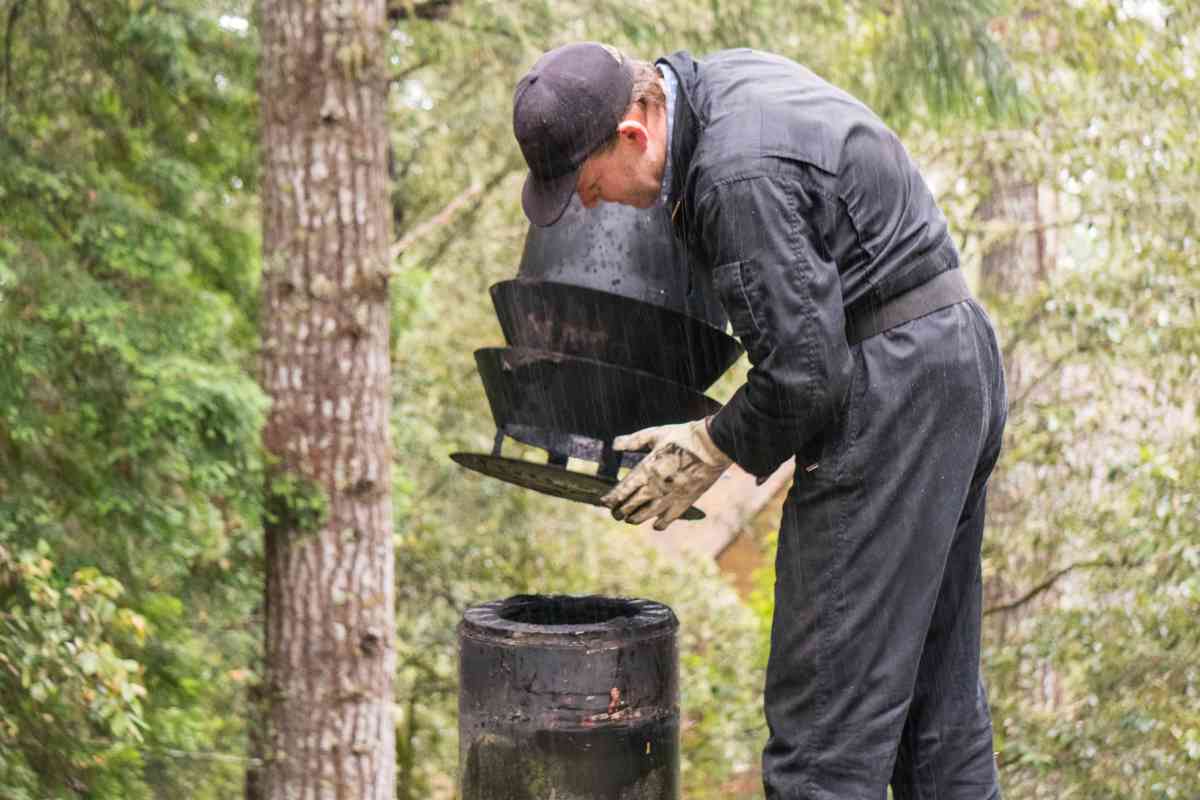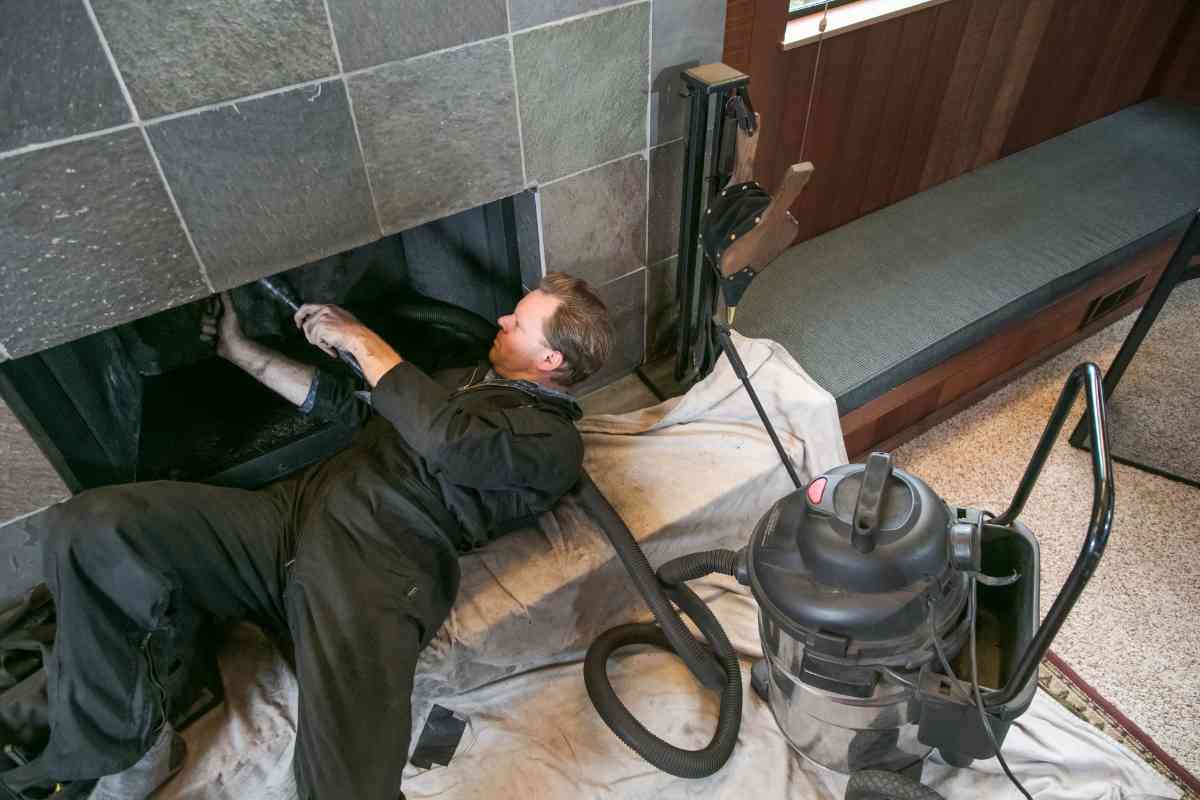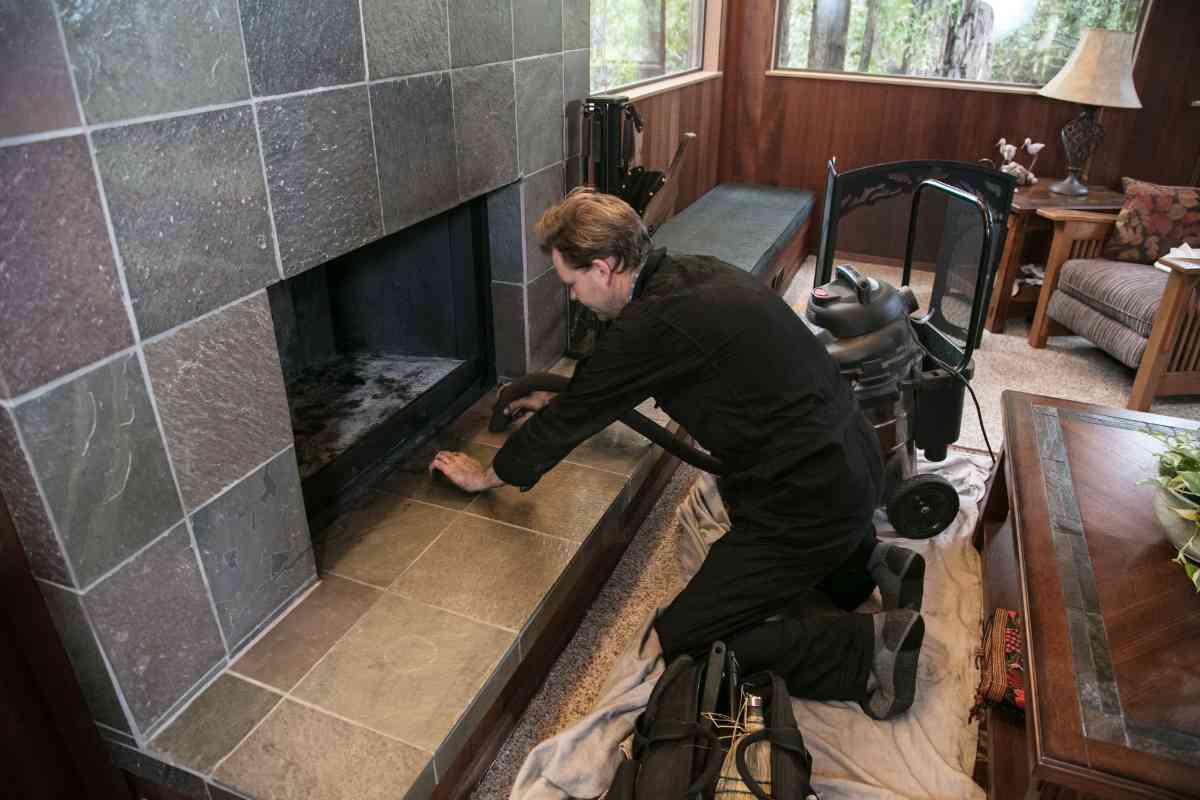How Much Creosote Is Dangerous? Three Build Up Stages Explained
Creosote is produced through the incomplete combustion of wood. And, its build-up can be dangerous. But how much creosote is dangerous?
Creosote build-up has three stages. Stage one and stage two creosote are not considered dangerous. However, stage three creosote is dangerous since it’s highly flammable inside your chimney.
When the temperatures start dropping and the cold season sets in, millions of homeowners will turn to their fireplaces to warm and heat their homes. Besides warming a home, the burning logs create a comfortable and relaxing atmosphere in your home.
However, if you fail to clean and maintain your chimney flue regularly, a fireplace can present a danger in your home. And this danger comes in the form of creosote build-up.
According to a report published by the National Fire Protection Association (NFPA), creosote build-up is one of the leading causes of chimney and fireplace fires in the country. Fortunately, there are ways of keeping the creosote levels in your home manageable while still enjoying the heat and the ambiance your fireplace offers.
In this article, you will learn more about what creosote is and how much creosote is dangerous.
What is Creosote?

So, what exactly is creosote? Whenever you are burning wood in your fireplace, you want the wood to combust completely. However, if your fireplace isn’t getting adequate airflow, the fire will not get sufficient oxygen. And, there will be incomplete combustion.
Consequently, if the oils in the wood fail to burn completely, they will escape together with the smoke in the form of gasses.
And as the smoke cools, these gasses will condense together with the other elements present in the interior of your flue and chimney.
Eventually, this creates a tar-like residue, which sticks to the interior of the chimney.
And, this residue or deposit is known as creosote. If you fail to get rid of it, creosote will continue building up, thus compounding the issue further.
Creosote is a highly flammable substance. Therefore, it poses a significant fire risk to your home.
Besides being a fire hazard, creosote also poses various health risks, both short-term and long-term.
How Much Creosote is Dangerous
As we’ve mentioned above, creosote build-up is both a fire hazard and a health risk. However, not all creosote is dangerous.
So, how much creosote is dangerous? Well, the level of danger that creosote poses will depend on the amount of build-up.
Generally, creosote build-up is categorized into three stages. These include stage one creosote, stage two creosote and stage three creosote. Stage three creosote is the most dangerous. Let’s take a closer look at each of these three levels.
Stage 1 Creosote
Stage 1 creosote is composed mainly of soot. And, this creosote is unavoidable. It features a flaky, loose deposit, which you can brush away easily using a standard chimney brush.
Level one creosote isn’t dangerous.
However, it will be highly advisable to get rid of it as frequently as possible.
If you fail to remove it, it will eventually cause restrictions in the chimney, leading to more creosote build-up.
Stage 2 Creosote

With time, the flaky, loose deposit will become a tar-like residue.
This tar-like residue is known as level 2 creosote.
Stage two creosote will be formed when airflow to the fireplace is restricted.
Just like stage one creosote, state two creosote doesn’t pose a serious health and fire risk. However, stage two creosote is quite hard to remove.
You will need to use scrapers or specialized brushes to get rid of stage two creosote from your flue or chimney.
Alternatively, you can use a rotary loop.
A rotary loop features a stainless steel cable connected to a hub. This hub contains a couple of metal rods, which are spun by a powerful drill. And as it rotates, it will scrape off the stage two creosote from the flue.
Stage 3 Creosote
Stage three creosote resembles a thick, hardened, tar-like residue inside the flue. This stage is quite hard to remove.
Furthermore, it will begin dripping down like candlewax, once it reaches a particular temperature.
Stage three creosote is the most dangerous since it’s highly flammable. Once it catches fire, it will damage the entire chimney.
Also, the fire may spread to other areas of your home, leading to costly damage.
How to Prevent Creosote Build-up
Creosote is produced when firewood fails to combust completely. Also, excessive condensation in the chimney flue can cause creosote buildup.
Fortunately, you can reduce the amount and the degree of creosote by implementing certain measures. They include:
Only Burning Dry, Seasoned Firewood
One of the measures that you can use to prevent the build-up of creosote in your chimney is by using dry, seasoned firewood.
Dry, seasoned firewood has minimal levels of moisture.
Consequently, the wood will be able to combust completely, thus reducing the number of particles rising with the smoke and condensing inside the chimney.
Ideally, the wood you are using should have a moisture content of around 15% to 20%.
Ensuring the Fireplace or Firebox Gets Adequate Oxygen

Apart from ensuring your using dry, seasoned wood, you should also make sure your firebox or fireplace is getting sufficient oxygen.
If the fireplace isn’t getting sufficient oxygen, the wood will not burn completely, eventually contributing to the creosote build-up problem.
To this end, you should check the fireplace is getting sufficient fresh air, and you can opt to replace the air intake with a fresh one.
Reduce Condensation in the Chimney Flue
Another measure that you can implement to reduce the build-up of creosote is to reduce condensation in the chimney flue.
To do so, you need to ensure your flue pipe is maintaining temperatures of around 3500F to 5400F.
Key Takeaways
- Creosote is produced when wood fails to burn completely
- Creosote solidifies and forms a tar-like substance inside the chimney
- Creosote build-up poses a fire hazard and health risk
- Cleaning your chimney regularly can prevent creosote build-up






